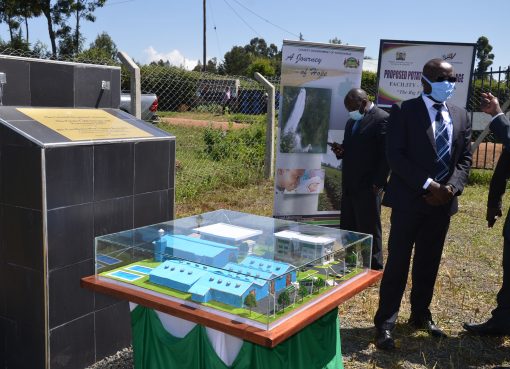Soil analyst, Bernard Ndung’u, has advised farmers to scout and identify soil-borne diseases in time so as to make early mitigation measures, to avoid adverse losses from suppressed crop production levels.
Soil-borne diseases and pests, he observes, have pushed some farmers to stop growing certain crops, as the cost of controlling them is high and eventually leads to huge losses.
“Most soil-borne diseases affect plants beyond the seedling stage, invading internal root tissue and interfering with the water and nutrients supply system,” he notes.
The analyst cites Nematodes as some of the most common soil-borne diseases. Nematodes, he adds, are microscopic unsegmented worms that invade the roots and cause them to form gall- like lesions.
“The gall- like lesions restrict water and nutrient uptake, leading to wilting of the crops,” he states.
Ndung’u urges farmers to always look out for the above-ground symptoms, which include loss of vigour, leaf yellowing, leaf drop, wilting, twig dieback and eventual sudden death of the crop that was seemingly healthy.
Another common soil borne disease is the fusarium, which is fungal that affects crops such as tomatoes and capsicum.
“The pathogen enters the plants through the roots and colonizes the plant’s vascular tissues, which clogs the xylem and causes drooping of the leaves,” he observes.
Ndung’u notes that although plants can be infected at any stage of growth, the symptoms of fusarium are mostly noticeable in the mid to late growing season, as they also cause stunted growth in plants.
“The initial symptoms of the disease include drooping and yellowing of leaves on one side of the plant, which may recover during the evening hours, but as the disease progresses, wilting of the plant gets worse and eventually dies.
In order to prevent and control soil borne diseases, Ndung’u encourages farmers to source planting materials from reliable sources that propagate certified seedlings and to sterilize farm tools, suspected to have been contaminated.
“Uproot and burn all diseased plants and do not use the remains of infected plants,” he cautions.
Farmers should also regularly test and correct the soil PH as pathogens thrive well in highly acidic soils.
“Additionally, farmers should always use well-composed manure, as it improves the soil texture, thus improving drainage that helps in the control of diseases such as root-rot,” he says.
Good agricultural practices such as crop rotational programs and not growing crops from the same family for consecutive seasons on an affected field, will prevent the spread of soil-borne diseases, he advised.
By Florence Kinyua





